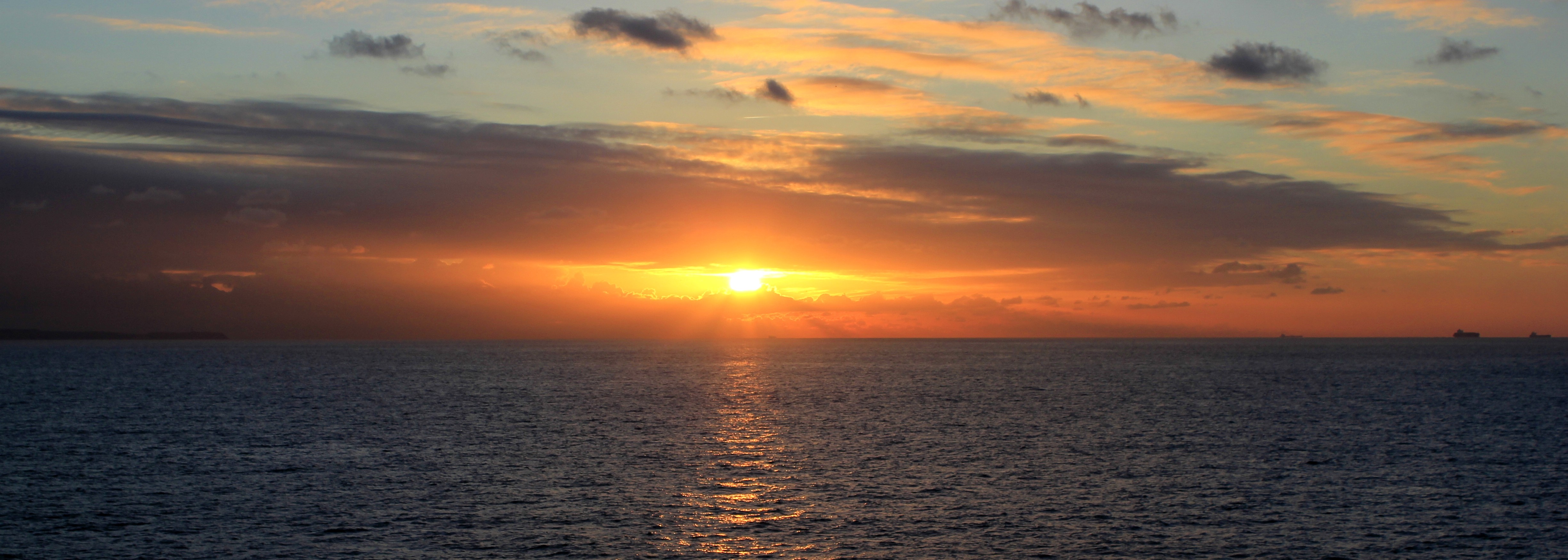Civilization con environment
Written by OTiTO
Civilisation con environment
We are not only depending on safe, solid ground under our feet, but also on an intact habitat around us. The basic conditions for life are light, warmth, air and water.
Although they seem to occur in abundance, clean air and water are the most valuable assets of life. I admit concerns that the air in our atmosphere can be used by people only up to a height of 3-4 miles - this is a variable, but within limits. The amount of water on the planet is a variable too, but still with limits. There is such a thing as upper and lower limits for these systems, and they must be calculated and published.
Although in the electronic filed big progress has been achieved, our civilization concerning the locomotion has got stuck for over 100 years at the level of a primitive fire culture. On the one hand, the technology to produce our means of transportation faster and in larger numbers, has improved enormously, on the other hand the main principle for their locomotion is unchanged - the combustion of carbons from the ground. The incessant increase in pollution could not be prevented even by the most advanced measures of a 'clean' combustion, because of the increase in vehicles was too explosive. This development is without a foreseeable end, and it‘s perspective currently represents a threat to all life on this planet.
This development contaminated not only our atmosphere, but also our waters and our soils are affected by the pollution. At the latest, after the exhaust scandal at VW would become clear that this issue was never off the table. This would be an opportune time to put a small break and to actively begin to take measures which prevent a deterioration of this situation or even to turn it back.
At this point, microorganisms could be brought into play. In his book 'Effective Microorganisms' the Japanese Professor Teruo Higa writes about a special composition of anaerobic microorganisms, he calls them effective microorganisms, EM shortly. Contaminated soil and water could be purified, while one is spreading this EM out in it. Professor Higa also developed a procedure to procreate this EM fast and at a reasonable price. If this is possible for water and soil with anaerobic microorganisms, it is conceivable that a biologist in his research can encounter aerobic spores, that are able to clean our atmosphere with their metabolism.
A sensible use of the funds, which are demanded by the car manufacturers to make up for the environmental damage, would be to finance such biological research projects and quickly implement the resulting solutions into action. Another aspect in connection with the explosive increase in fossil combustion, on a global scale, is the reduction of the proportion of oxygen in the atmosphere. Because oxygen exists in the air supposedly in "vast amounts" and because it costs nothing to the consumer, nowadays the air gets pressed with turbochargers into our engines to increase the power of the engines without having to enlarge the engines. Thus the oxygen consumption of the modern engines increases further.
One could argue that the oxygen is not really consumed, but only converted. This is a short-sighted reasoning, as the fuel in your tank is also only transformed and not really consumed, but your tank is still empty - and as well as by the combustion of the fuel the tank gets emptied, the burned oxygen is currently not available for heterotropic life organisms. The poor effects of this transformation on those living organisms can be demonstrated by a simple experiment. Lead the waste gases of the exhaust in the cabin of your car, sit down in, close doors and windows and start the engine. In this way you get a subjective reality what happens with life when fuel and oxygen gets only converted.
If we go one step further and feed now, in addition, the aerial supply of your turbocharger with the air from your cabin, you could even survive this attempt. Why? The engine dies earlier than you die. Why? Because it needs significantly more oxygen to function than you for your metabolism. Of course, this attempt is not suitable for a person who likes to go on living, but very popular as a suicide attempt. If you want to find out how much oxygen such a motor converts, it can be even today, in the age of the internet and search engines, quite hard. But instead I came across many requests for a reply to this question. This motivated me for further research and below you will find the answers.
For the subsequent calculations and comparisons I used two sources:
1. Wikipedia under the heading: 'combustion air ratio', section:
'air supplies' 'the complete combustion ' (lambda 1)
Lambda1 calls the ideal case of the combustion, with the fuel and oxygen are converted completely. Each car manufacturer is striving to achieve this state as constant as possible for its engines. Thus, the following information and data relate to the engine operating in this ideal state.
However, the information in the section 'air supplies' of Wikipedia contained a calculation error. The specified number of 11.370 litres of air for the combustion of 1 litre of gasoline is not correct, because the conversion from kg to litres was not considered for the petrol.
The air required for the complete combustion of 1 litre petrol is thus 8.526 litres. 9.420 litres of air are required to completely burn 1 litre of diesel.
What does this mean in terms of the oxygen?
The proportion of oxygen in the air is usually estimated at 21%. Thus we need for complete combustion of 1 litre of petrol 1.790 litres of oxygen. To burn 1 litre of diesel 1.978 litres of oxygen are required.
What do these numbers mean?
To answer this question I referred to a second source:
2. A work of Rainer Müller (Department of Physics Education, University of Munich) entitled:
'Respiration, metabolism and blood circulation'
To further evaluate the importance of these figures, I would like to compare two different types of combustion.
Let us once compare the fossil combustion of fuels, like it happens every day in your car, with continuous burning in your body, your metabolism.
How is with these two different types of combustion the Oxygen consumption?
The above reference assumes 17 breaths per minute with a respiratory volume of 0.5 litres of air per breath. This results in:
8.5 litres / minute * 60 * 24 = 12.240 litres / day * 365 = 4.467,6 m3/year * 75 = 33.5070 m3 / with a life expectancy of 75 years.
So much air gets transformed in 75 years by a person.
The oxygen percentage share of this is 21%. A person inhales these 21% fully, but exhales 16% of the oxygen again, thus he uses 5% of the oxygen of the air. If we assume that a person consumes 5% oxygen from the transformed air, we come to the following consumption values for oxygen:
0,425 litres / minute * 60 * 24 = 612 litres / day * 365 = 223,38 m3 / year * 75 = 16.735,5 m3 / 75 years life expectancy
Based on the above data, I would like to make a comparison between the oxygen consumption of a small car at a certain power, to the lifespan a human being can survive with this amount of oxygen.
This table gives the data with a fuel consumption of 10 litres /100 kilometre
|
small car |
human body |
|
|
|
|
1 Litre Diesel ~ 10 km |
3,23 days |
|
112 Litre Diesel ~ 1.120 km |
1 year |
|
8400 Litre Diesel ~ 84.000 km |
75 years lifetime for a human body |
Drive your car 10 km, then you consume the amount of oxygen with which a person could live 3.23 days.
Move 1.120 km with your car, then a person could survive 1 year with amount of oxygen used up by this action.
After 84.000 km with your new car, you have consumed the oxygen for a whole human lifetime.
If the engine is a good old motor from Opel, bringing another 500.000 km on your mileage indicator, you could convert than the oxygen needed for 6 whole human live times.
But is this the path which leads us to the "originally paradisical state of man"? (Quote from the German Duden)









